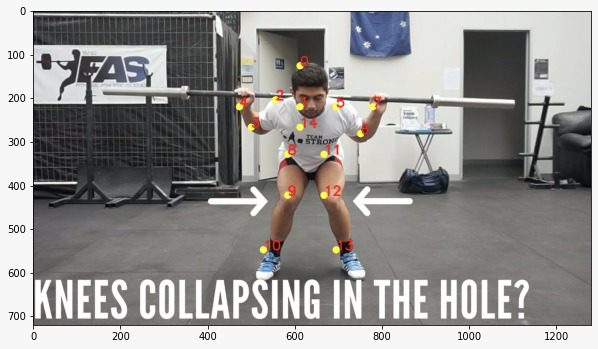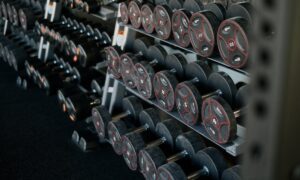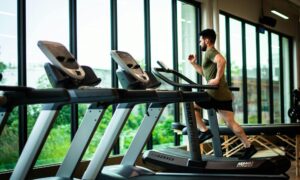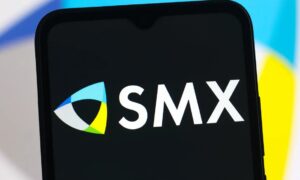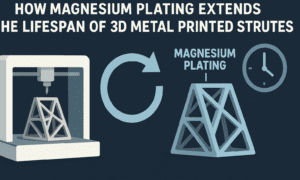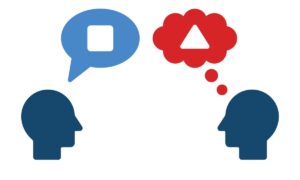In the realm of fitness and personal training, technology has always played a pivotal role in enhancing workout experiences and outcomes. One of the most exciting advancements in recent years is the integration of pose estimation technology into personal gym assistants. This article delves into how we used and how pose estimation is revolutionizing the way we approach fitness, offering a more personalized, efficient, and safer workout experience.
What is Pose Estimation?
Pose estimation refers to the process of using algorithms to detect human figures and track their movements in images or videos. This technology, rooted in computer vision and artificial intelligence, identifies key points on the body, such as joints and limbs, and uses this data to understand and analyze a person’s posture and movements.
The Emergence of Personal Gym Assistants
A personal gym assistant, powered by pose estimation technology, is a digital tool designed to guide users through exercises, providing real-time feedback and personalized workout plans. These assistants can be accessed through smartphones, tablets, or smart mirrors, making them a convenient and accessible option for fitness enthusiasts of all levels.
Implementation Details of Pose Estimation in Personal Gym Assistants
We began our journey by tackling a common challenge in fitness training: accurately counting the number of repetitions during an exercise. This is a crucial aspect often overlooked by practitioners. To address this, we first needed to understand each exercise and pre-store its specific configuration in a format similar to a JSON file.
Our next step involved identifying the joints of a person performing the exercise. We set up a camera to capture video frames, which were then used for pose estimation. To build the core of our pose estimation application, we chose Google’s MediaPipe, renowned for its effectiveness in real-time movement tracking. Our understanding and implementation of this technology were significantly enhanced by the tutorial provided on Dzone titled “Deep Learning Based Pose Estimation” by Sumedh Datar. The tutorial is very useful for anyone who would like to get started with pose estimation. It talks about the basics of pose estimation and this was very useful to us since we had no idea about pose estimation. Subsequently, this resource provided us with a detailed, step-by-step guide on executing pose estimation using camera footage and helped us get started with the gym assistant application.
Once we had our pose estimation module up and running, the next phase was to develop an intuitive application compatible with various devices like smartphones, tablets, or smart mirrors. This app, when used by someone exercising in front of the device’s camera, captures the data in real-time. Our model then analyzes the user’s pose, comparing it against the ideal posture and movement patterns for that specific exercise. This system not only offers immediate feedback for form correction or exercise modification but also keeps track of the number of repetitions completed in a session. This integration of advanced pose estimation with user-friendly application design has been a key factor in enhancing the effectiveness and accessibility of our personal gym assistant.
Advantages of Using Pose Estimation in Personal Gym Assistants
-
Personalized Feedback and Guidance
Pose estimation allows the gym assistant to analyze the user’s form and provide instant feedback. This ensures exercises are performed correctly, reducing the risk of injury and improving the effectiveness of the workout.
-
Real-Time Progress Tracking
By continuously monitoring the user’s movements, these assistants can track progress over time, adjusting workout plans to suit evolving fitness levels and goals.
-
Enhanced Engagement and Motivation
Interactive and responsive, these assistants keep users engaged, offering encouragement and adjustments just like a human trainer would.
-
Accessibility and Convenience
With no need for a physical trainer or gym membership, users can access professional guidance from the comfort of their homes, making fitness more accessible.
Future Prospects
Applications like ours will help individuals stay fit with almost zero cost on the personal training and keeps people healthy. The future of pose estimation in personal fitness is promising. We can expect advancements in accuracy, user-friendliness, and integration with other health-monitoring technologies. This could lead to more holistic health and fitness solutions, encompassing not just physical exercises but also recommendations for nutrition, mental well-being, and more.
Conclusion
Pose estimation technology is transforming the landscape of personal fitness, offering a blend of convenience, personalization, and effectiveness. As this technology continues to evolve, it paves the way for a new era in fitness, where everyone has access to a personalized gym assistant, making achieving fitness goals more attainable and enjoyable than ever before.

